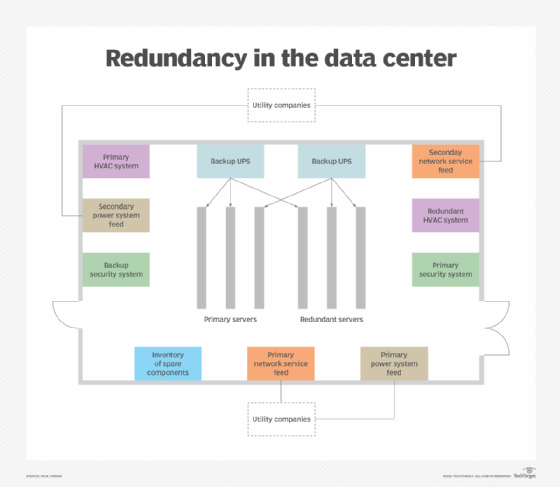Exactly How to Deal With Redundancy Pay If Company Goes Bust: Key Information for UK Workers
Exactly How to Deal With Redundancy Pay If Company Goes Bust: Key Information for UK Workers
Blog Article
Discovering the Operational Dynamics of Firm Redundancy and Its Long-Term Sustainability

Redundancy Techniques for Company Continuity
In order to make sure uninterrupted procedures, companies have to implement efficient redundancy approaches for service connection. Redundancy in this context describes the duplication of crucial elements or features within a system to minimize the impact of possible failures. By incorporating redundancy methods, companies can improve their strength versus interruptions caused by various elements such as all-natural catastrophes, equipment failures, or cyber-attacks.
One common redundancy approach is the application of backup systems and data storage services. This includes developing matches of important data and systems that can be triggered in case of a main system failing. Additionally, companies can develop repetitive interaction networks and source of power to preserve connection and operations throughout unforeseen events.
Furthermore, cross-training workers to carry out multiple functions within the business can act as an important redundancy technique. This guarantees that essential jobs can still be lugged out also if essential workers are not available because of illness or various other reasons. On the whole, reliable redundancy methods are important for businesses to maintain operational continuity and lessen the impact of possible disturbances.
Impact of Redundancy on Business Durability
Offered the vital function redundancy strategies play in making certain company connection, exploring the impact of redundancy on organizational durability comes to be imperative for understanding the all natural operational characteristics of a company. Organizational strength refers to an entity's capacity to adapt to interruptions, recoup from obstacles, and transform when needed while keeping core functions. Redundancy, when tactically applied, can substantially add to enhancing a company's durability despite unforeseen difficulties. By having back-up systems, personnel, or processes in position, companies can better stand up to shocks and proceed operations with very little disturbance.
In addition, redundancy can promote advancement and imagination within an organization as staff members feel equipped to take computed dangers, understanding that there is a safety and security internet to sustain them in situation of failure. In general, the effect of redundancy on business strength is extensive, shaping the long-lasting sustainability and success of a business.
Stabilizing Efficiency and Versatility in Redundancy
Achieving a harmonious stability between functional efficiency and flexible versatility is a crucial difficulty in the critical deployment of redundancy within organizations. Reliable operations are essential for preserving productivity and cost-effectiveness, making sure that resources are utilized optimally. However, too much emphasis on effectiveness alone can bring about rigidness, making it hard for companies to adapt to unanticipated modifications or difficulties. On the various other hand, versatility permits organizations to respond nimbly to advancing conditions, fostering technology and durability. Yet, way too much flexibility without a strong functional foundation can cause inefficiencies and variance.
To balance performance and versatility in redundancy preparation, companies need to meticulously examine their functional demands, market characteristics, and critical goals. Eventually, discovering the best equilibrium between efficiency and versatility is critical for developing a lasting and durable organization in the face of unpredictability.
Long-Term Sustainability Via Redundancy Planning
To ensure long-lasting feasibility and stability, organizations should strategically align their redundancy planning with long-term sustainability goals, therefore harmonizing functional performance with adaptive versatility. Lasting sustainability through redundancy preparation entails greater than simply short-term cost-cutting measures. It needs a thorough strategic method that prepares for future challenges and opportunities. Companies must see redundancy not as a responsive option to prompt troubles however as a proactive approach for long-term success. By integrating redundancy preparation with sustainability purposes, companies can create a durable framework that can withstand different market fluctuations and inner changes.

Aggressive Actions for Sustainable Company Procedures
How can companies proactively enhance their operational sustainability for long-lasting success? Applying aggressive actions is crucial for firms intending to make sure sustainable operations.
Furthermore, fostering a society of constant renovation and learning within the company he has a good point can improve adaptability to transforming market problems and consumer demands. Urging worker involvement in decision-making procedures and offering opportunities for specialist advancement can increase spirits, productivity, and overall efficiency. Establishing clear objectives, checking crucial efficiency signs, and frequently assessing progression are important components of aggressive sustainability administration.
Teaming up with distributors, clients, and other stakeholders to advertise sustainable techniques throughout the supply chain can create a surge result of favorable effect - redundancy pay if company goes bust. By taking positive actions towards operational sustainability, firms can construct resilience, drive technology, and secure their long-term success in an ever-evolving business landscape
Conclusion

In the realm of organizational management, the tactical implementation of firm redundancy stands as an essential yet elaborate practice that requires a fragile balance in between operational performance and long-lasting stability. By exploring the operational dynamics that underpin view publisher site firm redundancy and examining its wider implications for business strength and adaptability, a nuanced understanding of just how redundancy techniques can form the future trajectory of a company starts to unravel.Given the important role redundancy strategies play in making sure business continuity, checking out the influence of redundancy on organizational durability ends up being critical for understanding the alternative operational dynamics of a company. Generally, the impact of redundancy on organizational durability is extensive, forming the long-term sustainability and success of a firm.
In verdict, recognizing the functional characteristics of company redundancy is vital for ensuring lasting sustainability.
Report this page